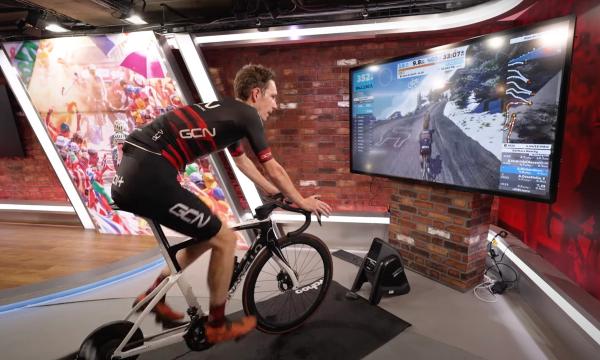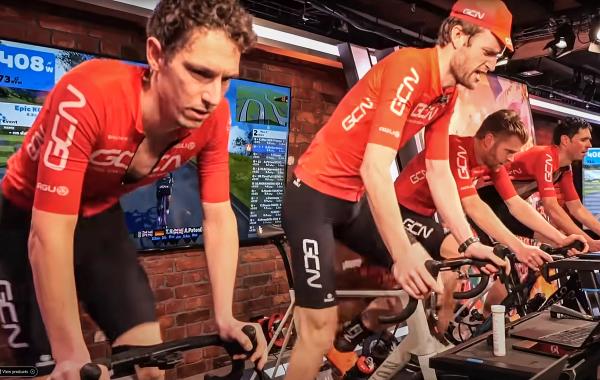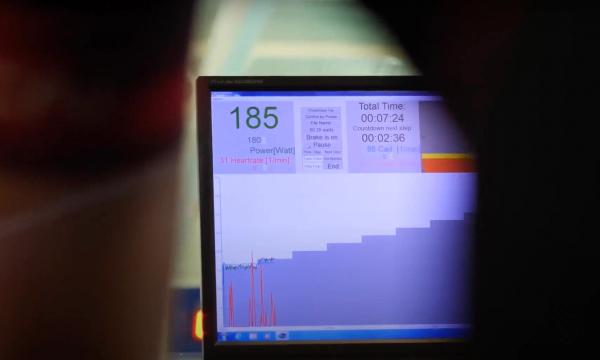Mastering nutrition and recovery: what should you eat while following an indoor cycling plan?
A solid nutritional plan will help to keep your body energised and aid recovery throughout an indoor training plan
Tom Hallam-Gravells
Online Production Editor
© GCN
Fuelling and nutrition is important whether you're training outside or indoors
There are many key elements to a successful indoor cycling training plan. Structure, consistency and quality, as well as quantity, will all set you on the path to success, but there is another key element that is often neglected by cyclists: nutrition.
As a group, cyclists have to put a lot of focus on nutrition - no one wants to experience the dreaded bonk. But there is more to it than simply fuelling for rides. What you eat on a daily basis will help to maximise your recovery and gains from training, forming another key element to a successful training plan.
There’s no better time to start thinking about nutrition than during turbo training season when you’re laying the foundations for the year ahead. With that in mind, here are some nutritional dos and don’ts. Most of these can be transferred over when you migrate outdoors in spring or summer.
Why is nutrition important for cyclists?
The importance of nutrition can’t be overstated and it has an impact before, during and after rides. Eating and drinking the right things will keep your energy levels high while also helping your body to recover; important if you’re following a dedicated training plan, when improvements are the name of the game.
The first part of the equation, keeping your body fuelled, becomes less prominent during indoor cycling season, when the volume of riding tends to dip. That doesn’t mean that fuelling can be pushed to one side, though, and you should still think carefully about what you eat before and after rides, especially if you are completing longer endurance rides indoors.
You’re not going to bonk during a one-hour indoor session, but a lack of energy due to poor nutritional choices can have an impact on the quality of your workouts as your body needs access to energy stores when operating at high intensities. When these drop below a certain level, performance levels drop too.
The recovery side of the equation is just as important. Good nutritional habits will maximise any gains by helping the body to adapt to the stresses of training. Your body will do this even with bad nutrition, but it’ll be much more effective at it if you’re eating the right things. Even if you remain lean and in good shape with a bad diet, that doesn’t mean that you can’t benefit from nutritional changes.
A good case study on the importance of nutrition, GCN’s Ollie Bridgewood changed his diet in 2018 when his functional threshold power (FTP) was 290. It has since risen to above 320. While this was the result of multiple factors, the biggest change Ollie made was to his nutritional plan, and he reaped the rewards.
- Read more: How fit can you get from indoor training?
What should cyclists eat?
To fulfil these fuelling and recovery needs, cyclists should aim to take on plenty of carbohydrates and protein, but like anything, it’s about variation. While these elements should form the main pillars of a cyclist’s diet, it’s important to eat sources of other nutrients and vitamins too. Cycling may be your focus but your nutritional choices have an impact on your non-cycling life too, and you want to remain healthy in general.
Carbohydrates
Most cyclists don’t need any introduction to the importance of carbohydrates. That’s for good reason, as carbs are critical for cycling performance.
Any carbohydrates that we eat are converted into glucose, the sugar in a body’s bloodstream which is used for energy. It’s what fuels exercise. Once the body is full up on glucose, any excess is turned into glycogen which is stored in the liver. These stores can also become full, at which point the excess glucose becomes fat.
Finding the balance so that these stores don’t overflow is important. Through training, the body adapts so that it can store more glycogen, but it’s important not to overdo things as eating too many carbohydrates can lead to a buildup of fat.
As most turbo training sessions are on the shorter side, concentrate on fuelling ahead of the ride. For any sessions lasting an hour or less, this should be adequate. You may sometimes need a little top up during this hour if it’s particularly high-intensity. Aim to eat your main meal around three to four hours before a workout as this will give it time to fully digest, so your body can reap the full benefits. If you don’t have that window of time, aim to have a slightly smaller meal as it will digest faster - you can always top up your energy levels with a high-carb meal the night before.
For longer, indoor endurance rides, it’s generally recommended that cyclists should consume around one gram of carbohydrate for every kilogram they weigh, per hour of exercise. This won’t work for everyone, so test to find what works best for you.
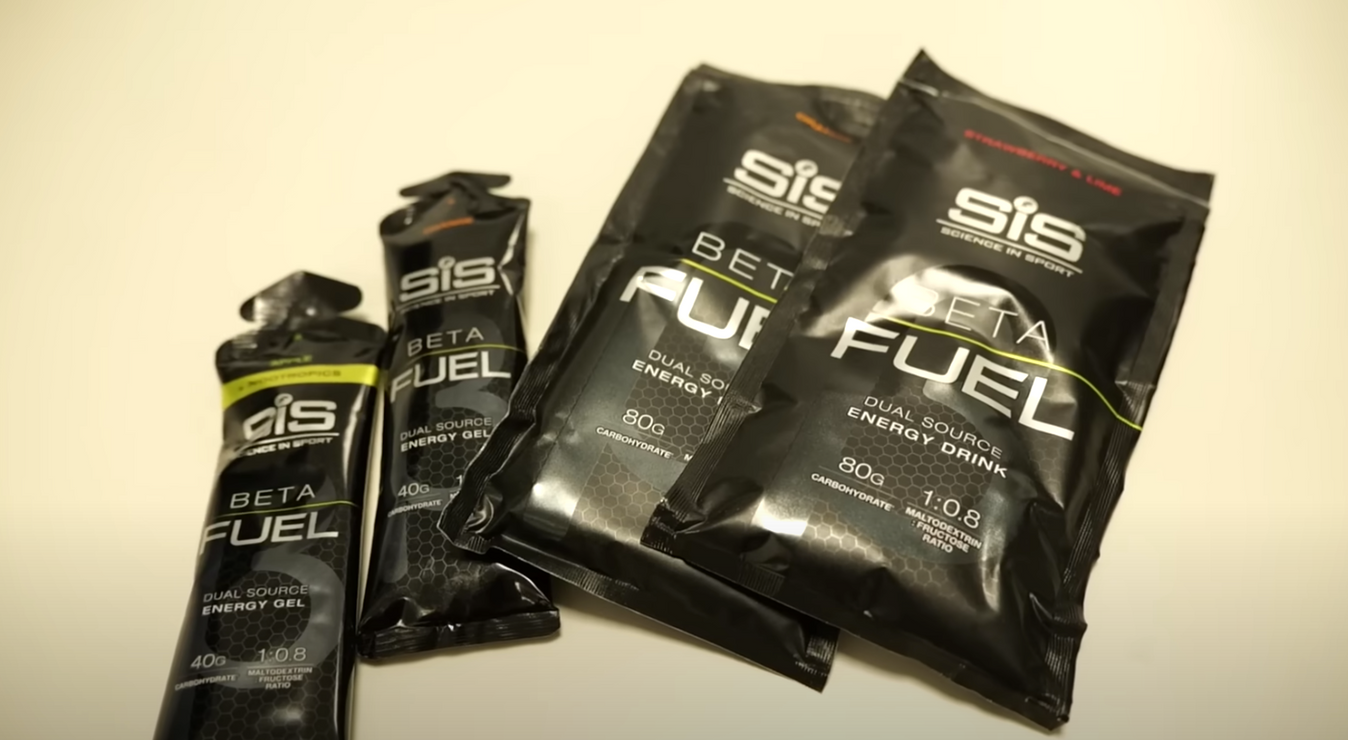
© GCN
Many brands, like Science in Sport, offer dedicated energy products
How this is delivered can vary, with many cyclists preferring dedicated energy gels and bars from brands like Enervit and Science in Sport. These can sometimes cause stomach issues if you’re not used to them, so test things out and find what works for you.
Protein
In the past, professional cyclists used to orientate their diets almost solely around high-carb foods. Now the benefits of protein are better understood and this also forms an important part of their nutritional plans, and it has the same benefits for amateur cyclists too.
Training essentially damages our muscle fibres. The body responds by repairing them, except it does this by making them stronger in a process called hypertrophy, hence how training leads to improvements. Protein provides the building blocks for muscles and is essential for this process. That’s why it’s so important for recovery and should form a key part of any nutritional plan.
Like carbohydrates, there is a limit to this and a study in the British Medical Journal found that an intake above 1.6 grams per kilogram of body weight per day didn’t elicit any extra benefits. That applied to strength training so for cycling, which is more cardio than muscle intensive, a lower intake will be sufficient for most cyclists.
Make sure you don’t dip below the minimum recommended limit which, according to the British Heart Foundation, is 0.75 grams per kilogram of body weight per day for an adult.
Cycling nutrition top tips
Adding lots of carbohydrates and protein to your diet won’t guarantee training plan success and there are some other things to be wary of, and others you should definitely avoid.
Watch the calorie count
Try to keep an eye on your calorie intake. There are plenty of apps available to help with this.
Mastering your calorie intake will ensure that you’re taking on the required carbohydrates to fuel your rides without overstepping things and taking on too many, which can build fat stores.
You can’t out-train a bad diet
It doesn’t matter how much you train, if you eat badly, you’ll never reach your full fitness potential.
If you’re putting the hard work in on the bike, you should also be mindful of what you eat off it too.
Don’t cut back too much
Don’t get too extreme and under-fuel. This will significantly hamper your recovery and energy stores, which will in turn affect the quality of your workouts. This, once again, is where a calorie counting app can be really helpful, ensuring you stick to a healthy intake.
Many apps will also help you to plan out a balanced diet, taking the stress and frustration out of the process if you’re not confident doing it.
Avoid using food as a reward
You finish a tough training session and, as a reward, immediately reach into the fridge to indulge in a treat - we’ve all done it! When your energy levels are low after a ride, the temptation can be too big to avoid.
Recovery begins from the moment you finish riding, so you should aim to start taking on the correct foods as soon as you’ve hopped off the bike. This is especially important straight after a ride when your body needs protein to start the recovery process.
Stay hydrated
It’s not just about what you eat, hydration also matters. That’s true year-round when cycling, but dehydration can be a major problem when training indoors. As there isn’t any airflow, it’s harder to regulate a body’s temperature, causing you to sweat more. The more you sweat, the quicker you will dehydrate.
That’s why, perhaps surprisingly, our first hydration tip is to use a fan to provide some cooling relief. Depending on how warm you get, it may require two fans. Everyone’s different, so listen to your body and make sure you use as many as is required.
The more obvious part of hydration is drinking. Even though you may only be on a turbo trainer for relatively short periods, usually an hour or so, that doesn’t mean that you don’t need to worry about drinking as much. Stick to a ‘little but often’ policy. This may require a conscious effort but you'll build up a positive habit, ensuring you’re hydrated at all times.
Do you have any more fuelling or hydration tips? Let us know in the comments below.
Need more indoor cycling help or inspiration? GCN's ultimate guide to indoor cycling has you covered with advice and guides on everything from turbo training tech to workouts. Check it out here.
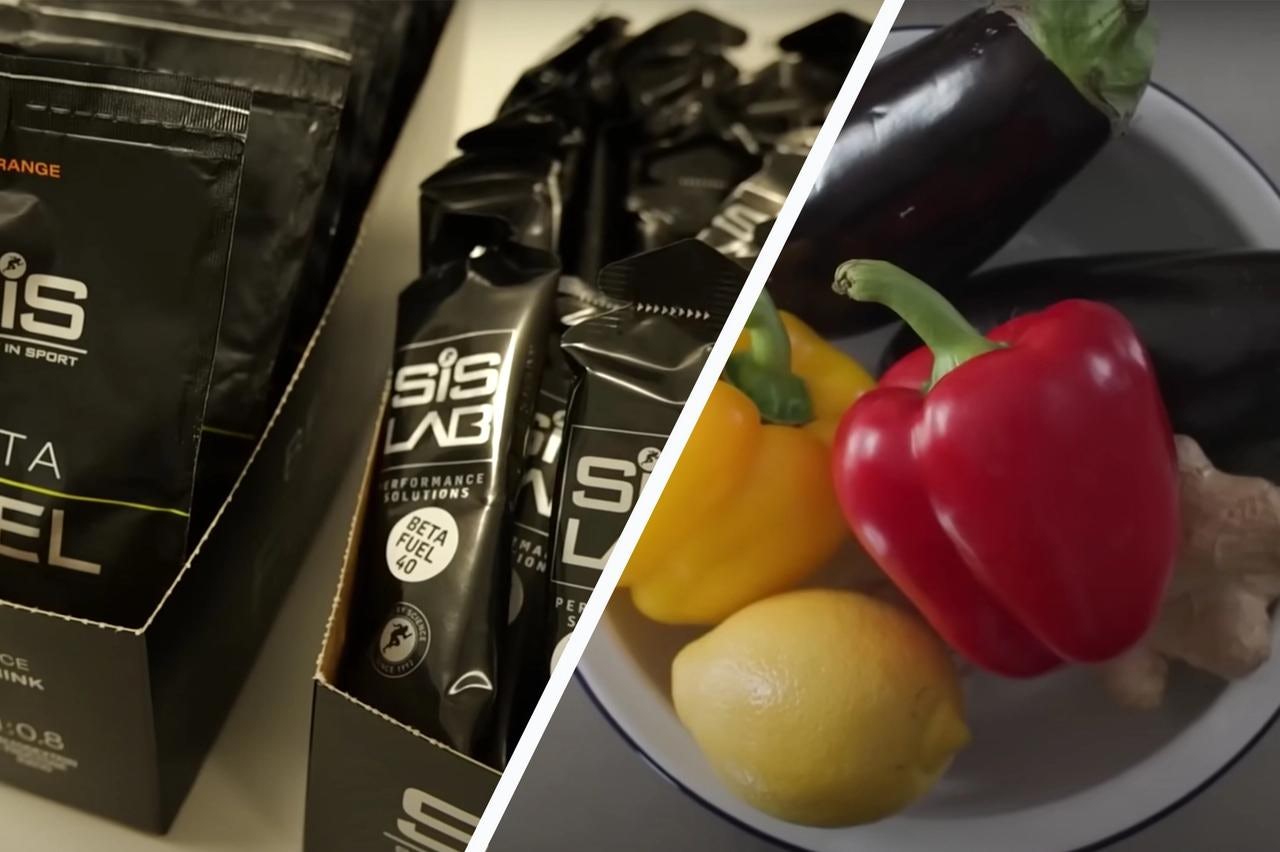








.jpg?w=600&auto=format)
